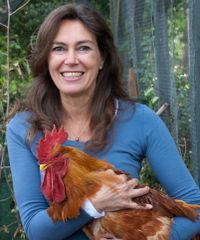This famous historic garden is awash with colorful spring tulips
Arundel castle gardens are a masterclass in how to use tulips for vivid splashes of spring color and pattern

Gardening the grounds of the monumental Norman stronghold of Arundel Castle is not for the faint hearted, and a bold and inventive approach has realized a series of astonishing gardens.
While on an immense scale, many of the design elements can be reduced down to a domestic scale and incorporated alongside other garden ideas to inspire your own planting plans.

The 18th Duke and Duchess of Norfolk, Edward and Georgina Fitzalan-Howard have, since 2002, revolutionized the traditionally classical english garden of Arundel Castle.
The Howards commissioned garden design partners, Isobel and Julian Bannerman, to create some fabulous head turners.
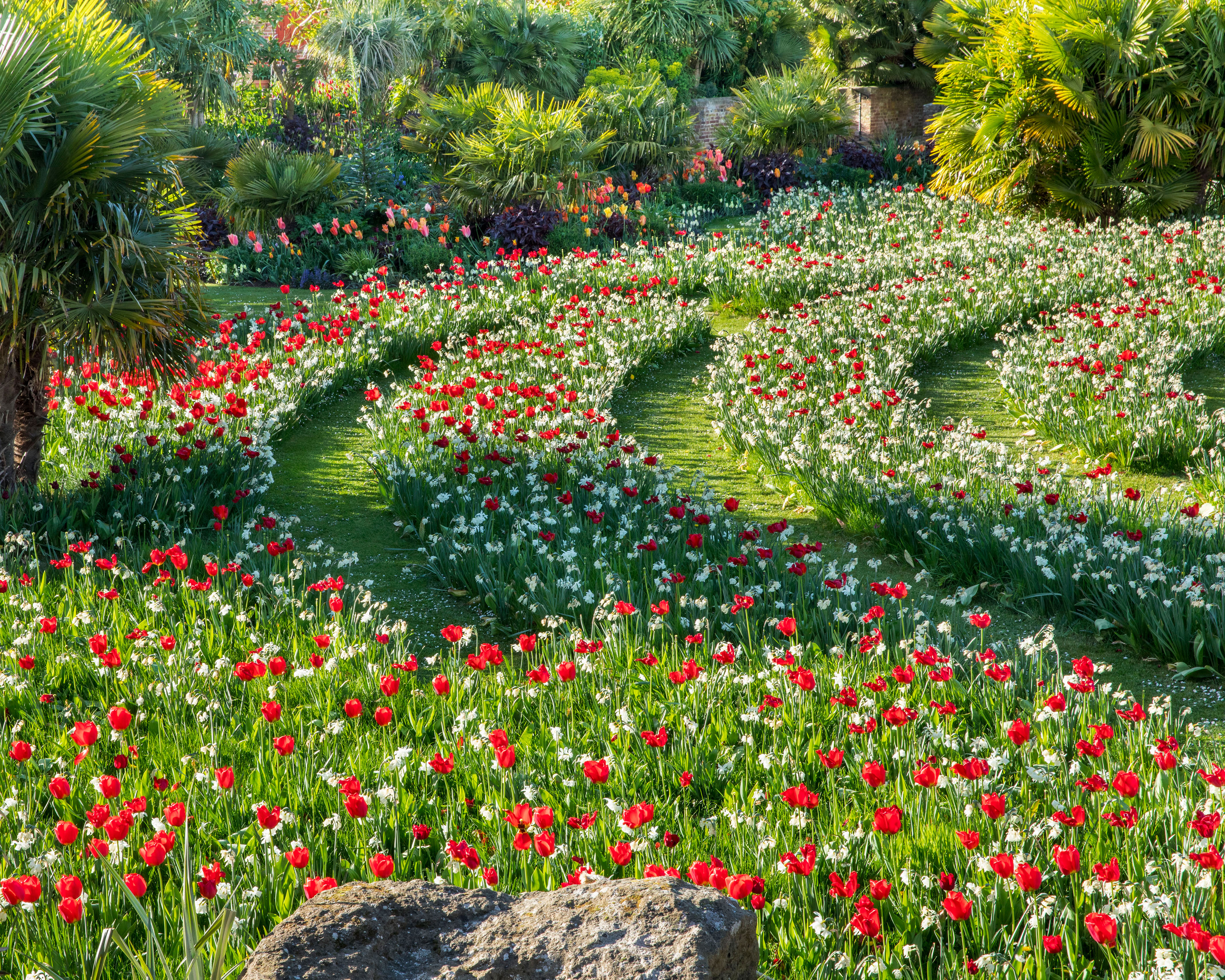
The subtropical Labyrinth Garden is one of these. Previously a large lawn, the Bannerman’s introduced exotic windmill palms, Trachycarpus fortunei and the lawn now forms a grassy labyrinth planted with swirls of more than 20,000 flame-red Tulipa ‘Oxford’ and ‘Apeldoorn’ against masses of ash-white, scented Narcissus ‘Thalia’.
In a nod to naturalistic planting design, ‘The spring bulbs are left to naturalize; many tulips come back, surviving around 3 years. The 5,000 strong annuals plug those gaps,’ explains head gardener, Martin Duncan.

Running with the tropical garden ideas, Martin quadrupled the palms in the Collector Earl’s Garden and piled in hundreds more exotics, such as huge cannas, banana plants and echium. ‘Size, shape and texture are key; color adds the final wow,’ he explains.
Design expertise in your inbox – from inspiring decorating ideas and beautiful celebrity homes to practical gardening advice and shopping round-ups.
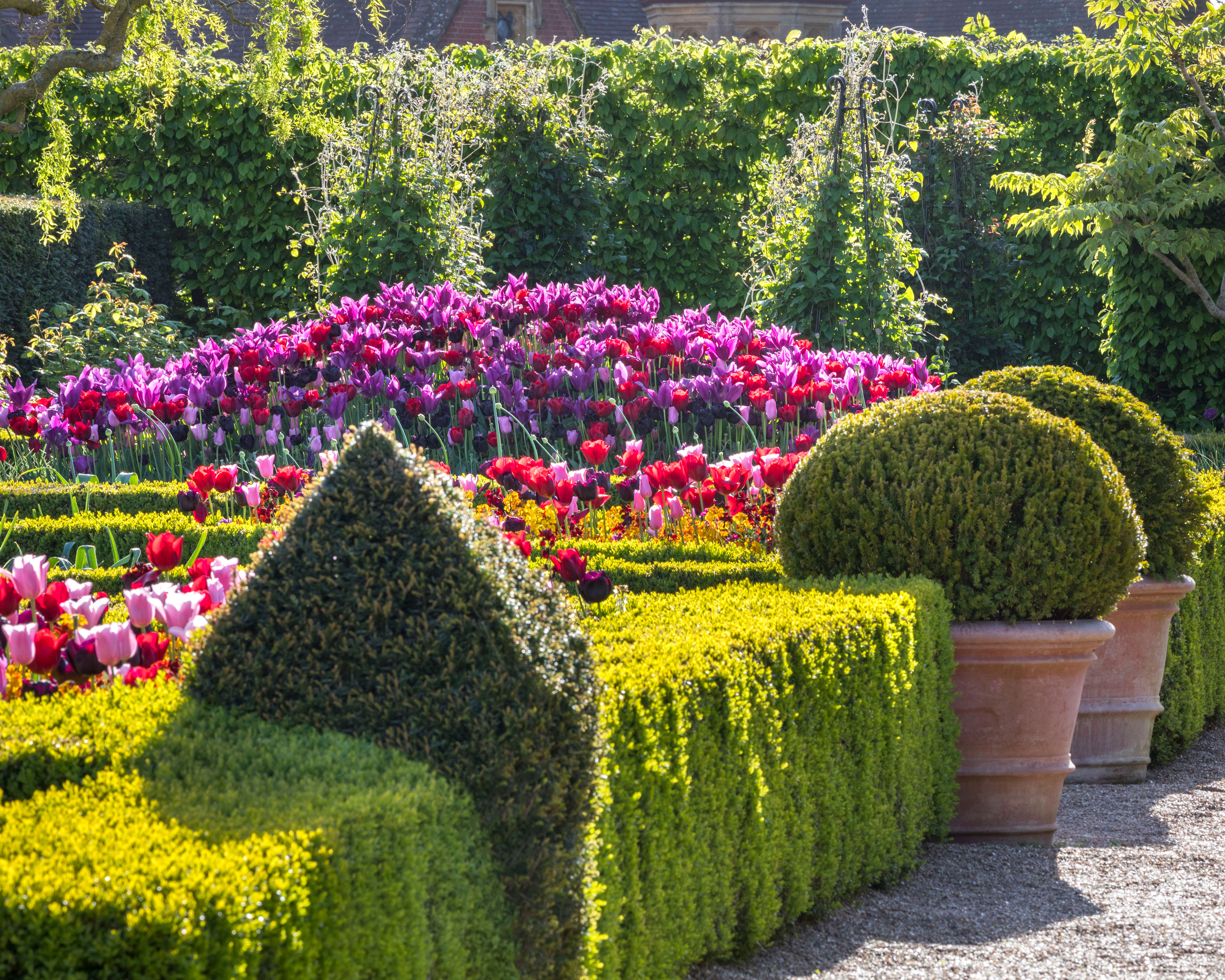
Martin takes full credit for Arundel’s spectacular spring bulb bonanza, with his team of seven gardeners plus volunteers planting a massive 1.3 million bulbs in a single decade.
There is little he does not know about planting tulip bulbs, as well as alliums, camassia and planting daffodils.
Thick box parterre gardens encase a jewel box of tulips, with a spectacular wedding cake of tiered tulips. Tulipa ‘Passionale’ ‘Mistress’, ‘Paul Scherer’, ‘Bastogne.’
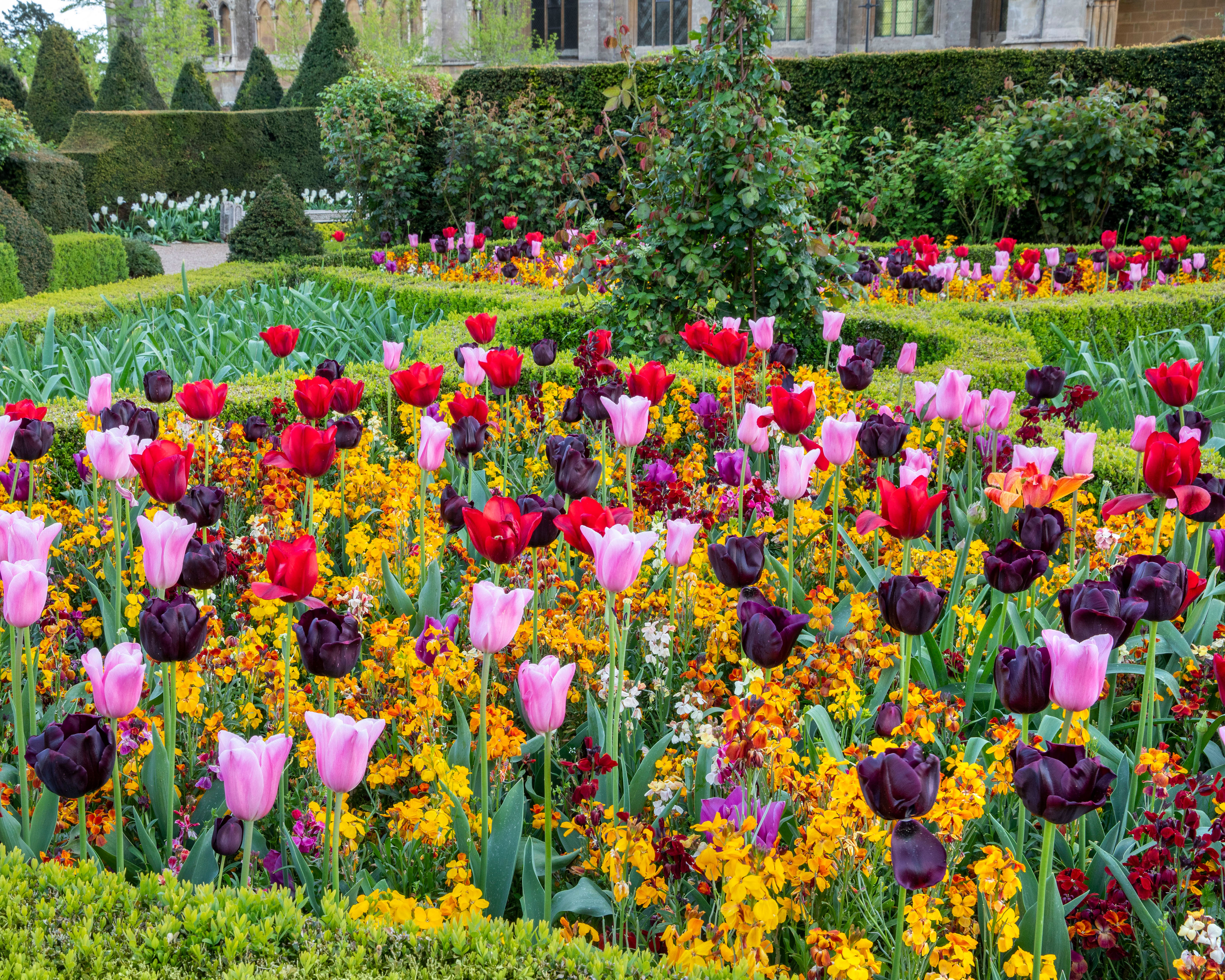
There are over 150 different varieties of tulips planted for a successional, coordinated cavalcade of color, height and form, to inspire flower bed ideas.
Martin orchestrates the tulip explosion, which varies in tone and intensity, heightening the individual character of each ‘garden room’.
There are plenty of ideas to take away is you're considering garden color schemes.

Hot-headed Tulipa ‘Firework’ and exotic parrot Tulipa ‘Rococo’ blaze in the sub-tropical borders.
Mellower, warm-hued blooms, like Tulipa ‘Ballerina’ in large terracotta pots are more reminiscent of Mediterranean garden style.

Classic English Borders are threaded through with refined purples, lilac and white, while the Fitzalan Chapel’s White Garden is essentially monochromatic, with Tulipa ‘White Triumphator’ under planted with white wallflowers.
‘500 bulb-packed pots are on standby, ready to refresh earlier, spent blooms, ensuring a long and spectacular show,’ says Martin.
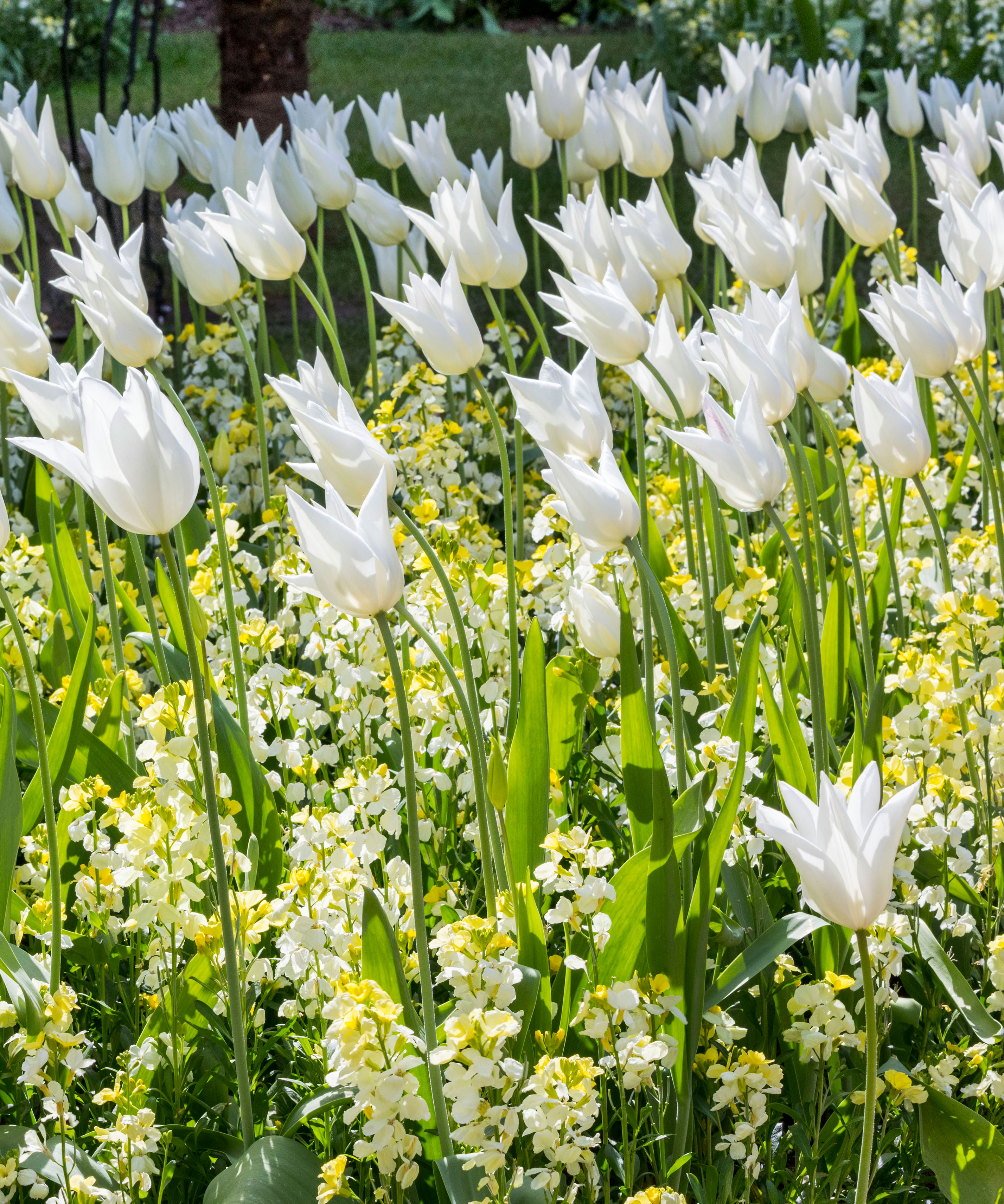
In the more naturalistic Stumpery, tulips are dialed right down. Gentler species or botanical tulips, turkestanica, sylvestris and linifolia, mingle with other ‘woodland’ natives.
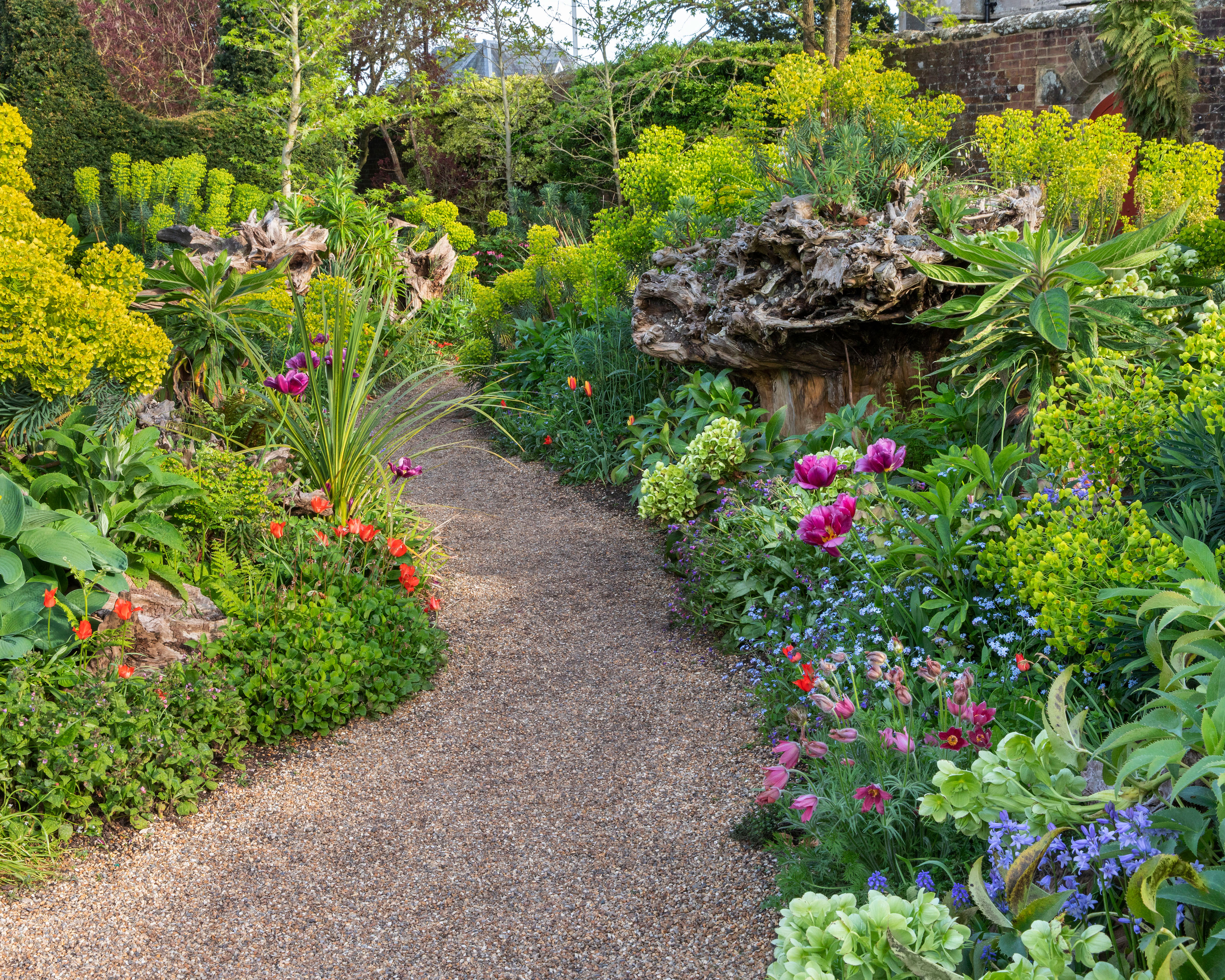
Bluebells, snake’s head fritillary and pasqueflowers are tucked in among gargantuan tree stumps ballooning with verdant euphorbias, ferns and hellebores.
‘We hand-picked oak, yew and sweet chestnut estate tree stumps, felled by the great storm of 1987, upturned and interred them, so they are seemingly still growing,’ Martin explains. This is wonderful as one of many wildlife garden ideas.
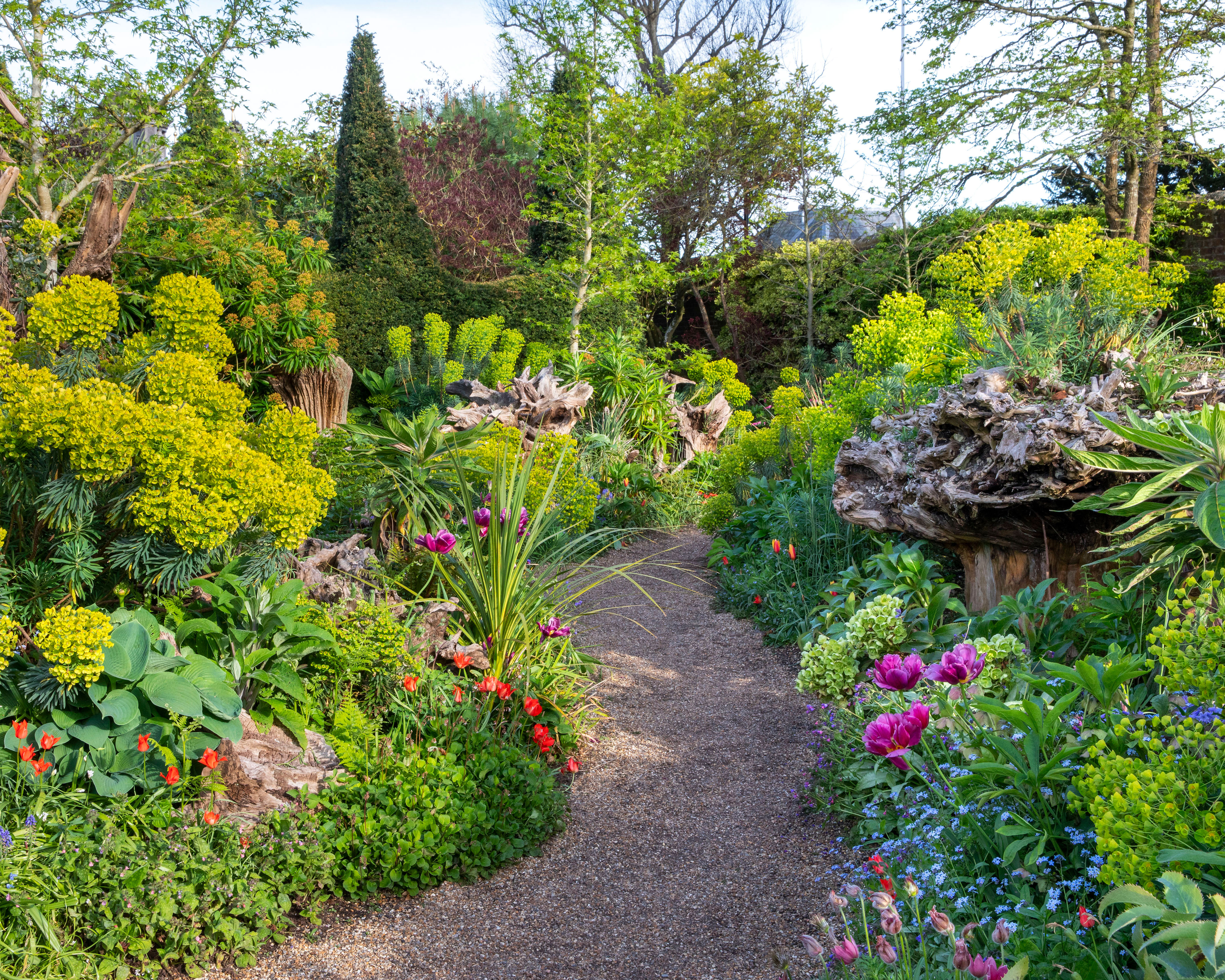
Martin offers advice on how to create a contemporary stumpery:
- Stumperies are scalable so start small and build on successes.
- Source stumps, either fallen home grown or from local woodsmen
- Stumperies can be created in sunny or shady sites, so tailor planting according to the soil and aspect.
- Position the stump, then dig a ½ metre deep ‘planting hole,’ wider than the stumps circumference to secure.
- Artistically place and plant securely, root upwards
- Surround with energetic, evergreen, woodland-feel planting and unmown, re-wilded grass. Euphorbia, ferns, hellebores, native bulbs with a handful of exciting exotics, echium, dierama.
- Position smaller, cascading and fascinating plants in the stump itself.
- Allow self-seeding to help develop a been-here-for-ever, natural feel.
- Develop planting for all seasons to encourage wildlife and include plants to attract butterflies and flowers that attract bees.
- Stumperies and re-wilding of grass areas with native helps increase biodiversity and support local wildlife.
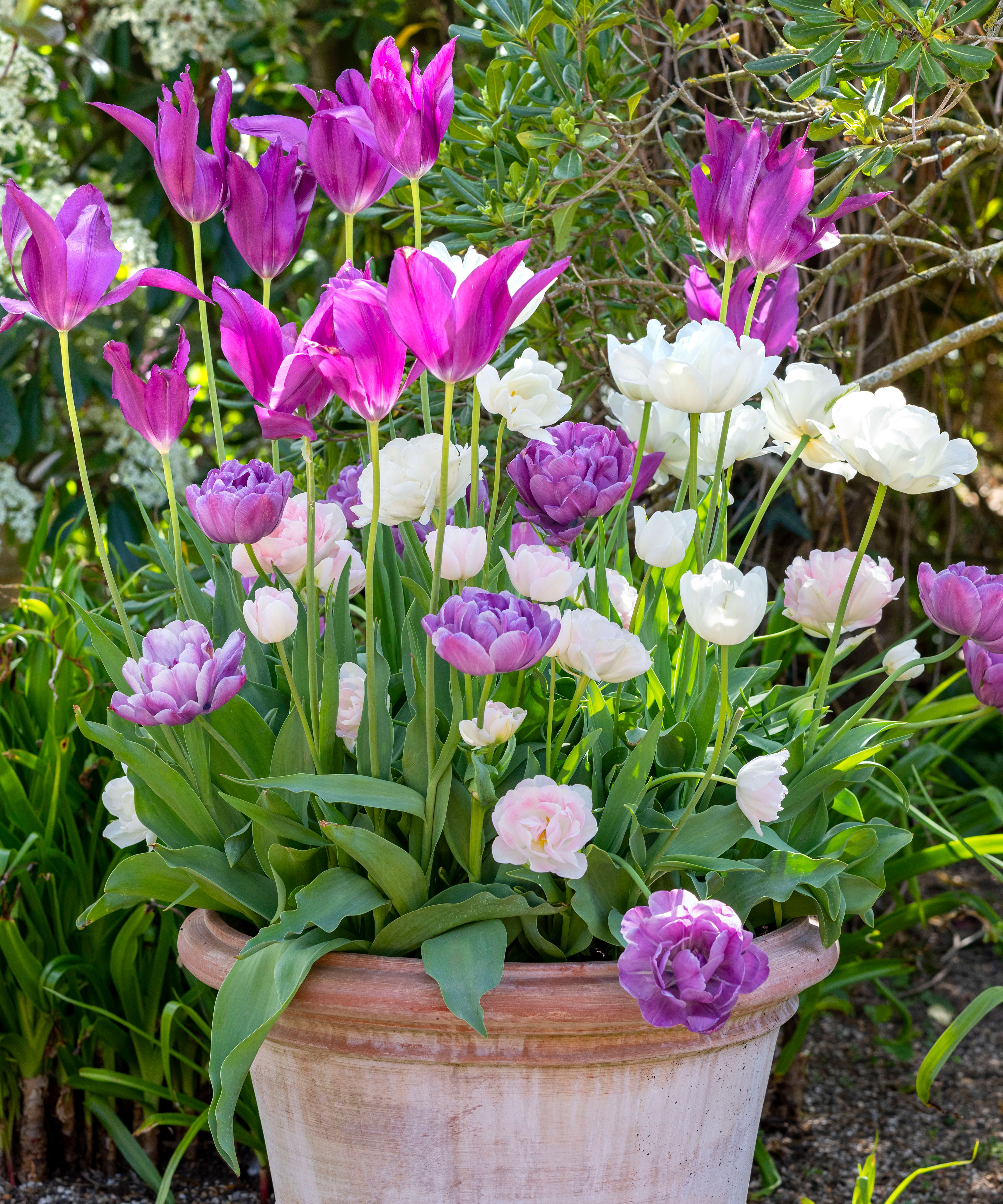
Ebullient planting engulfs these ancient, natural wooden sculptures, creating a feeling of ‘otherworldliness’.
This is a garden brimming with excitement and illusion, planting takes advantage of the enormity and antiquity of its setting. This is no shrinking violet.

A creative freelance writer, stylist and photographer, Jacky Hobbs has created home and garden features for prestigious lifestyle magazines for over two decades.
An earlier career travelling the world as a fashion and homeware buyer developed her passion for lifestyle, interiors, vintage, travel and later gardens.

